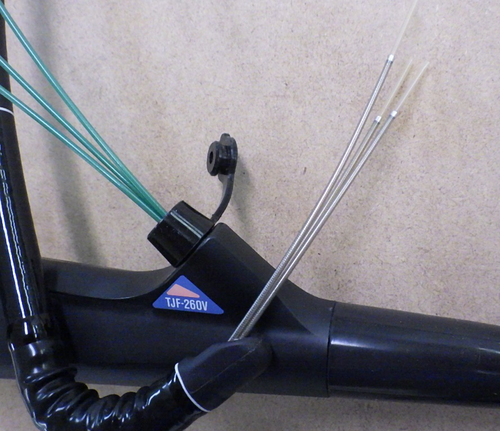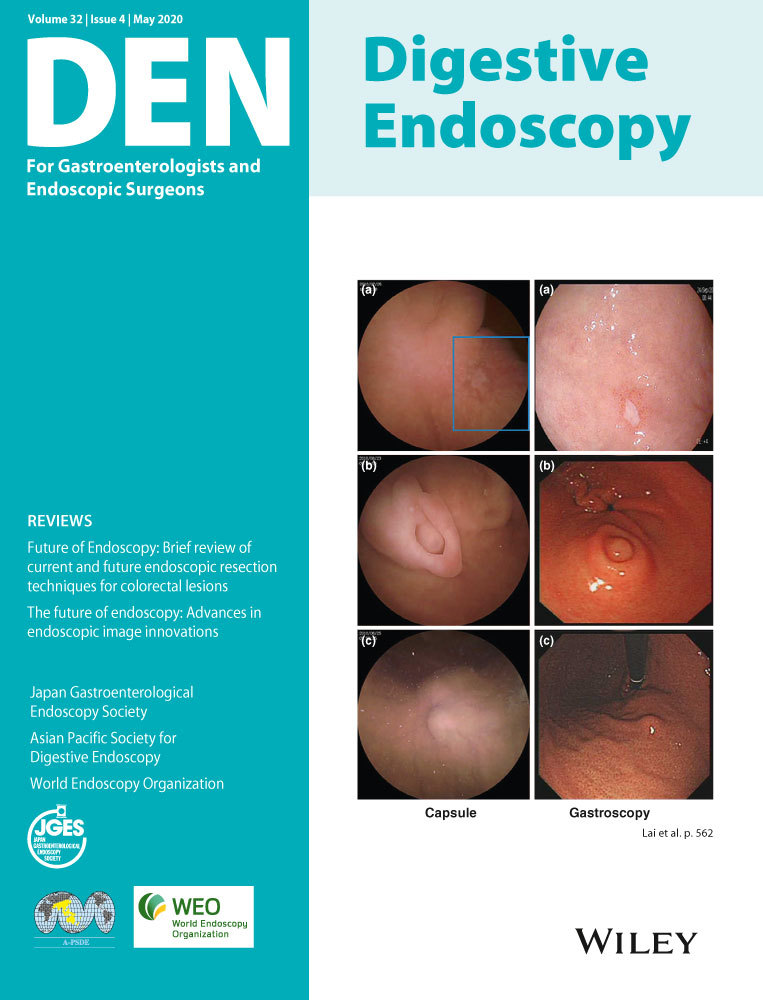Simultaneous triple side-by-side metal stent deployment for malignant hilar biliary obstruction
Abstract
Watch a video of this article
Brief Explanation
Triple deployment of metal stents (MSs) in high-grade malignant hilar biliary obstruction (MHBO) is technically challenging.1-4 Although combined side-by-side (SBS) and stent-in-stent deployment might reduce its difficulty, the insertion of the third MS remains a concern.5 A new MS that has a 5.4-Fr ultra-thin delivery system (Zeo Stent V; Zeon Medical, Tokyo, Japan) was recently developed, and it facilitates simultaneous triple SBS deployment (Fig. 1). Herein, we report an initial case of simultaneous triple SBS deployment using this MS for MHBO.

A woman in her 80s with cholangiocarcinoma with liver metastasis developed jaundice due to Bismuth type IV MHBO. Pre-drainage of two biliary branches was insufficient. To ensure achievement of successful three-branched drainage and as the patient's common bile duct (CBD) was large, we performed simultaneous triple SBS method. After the insertion of a TJF260V (Olympus Medical Systems Corporation, Tokyo, Japan) and three 0.025-inch guidewires into the left hepatic duct, right anterior sectoral duct, and right posterior sectoral duct across the stricture, the three delivery systems of the Zeo Stent V (all 8 mm in diameter and 60 mm in length) were simultaneously inserted into these ducts over each guidewire. The stents were then released one by one in order of the right posterior sectoral duct, then the left hepatic duct, and then the right anterior sectoral duct. Lastly, three MSs were deployed in the SBS configuration (Fig. 2 and Video S1). No stent occlusion and no adverse events were observed during the follow-up period.

Simultaneous triple SBS deployment avoids the risk of the second or third MS deployment failing because the three MSs are inserted simultaneously. This method can be a good option for high-grade MHBO requiring triple stenting, but the technique is only indicated for patients with large CBDs due to overexpansion.
Authors declare no conflicts of interest for this article.




